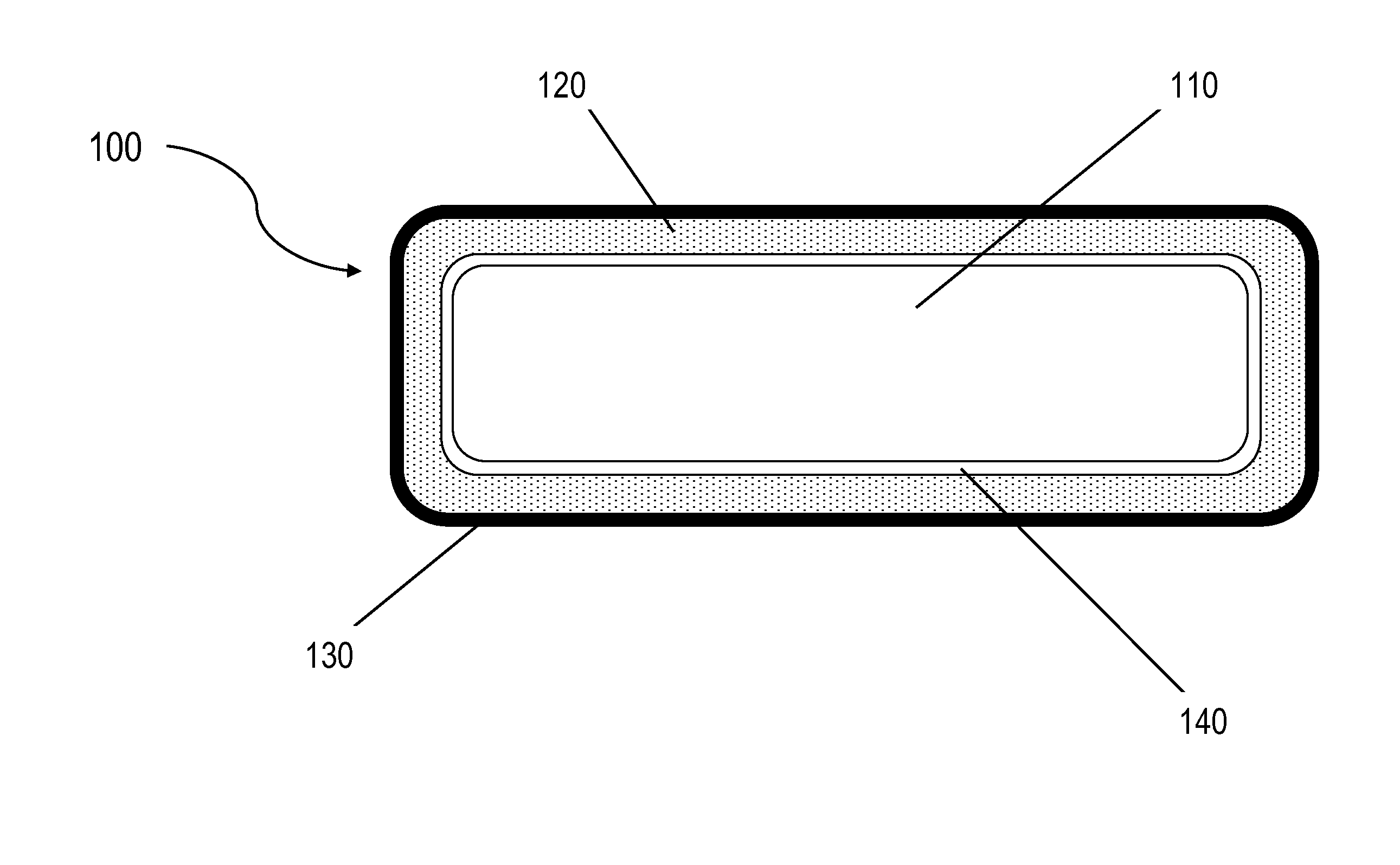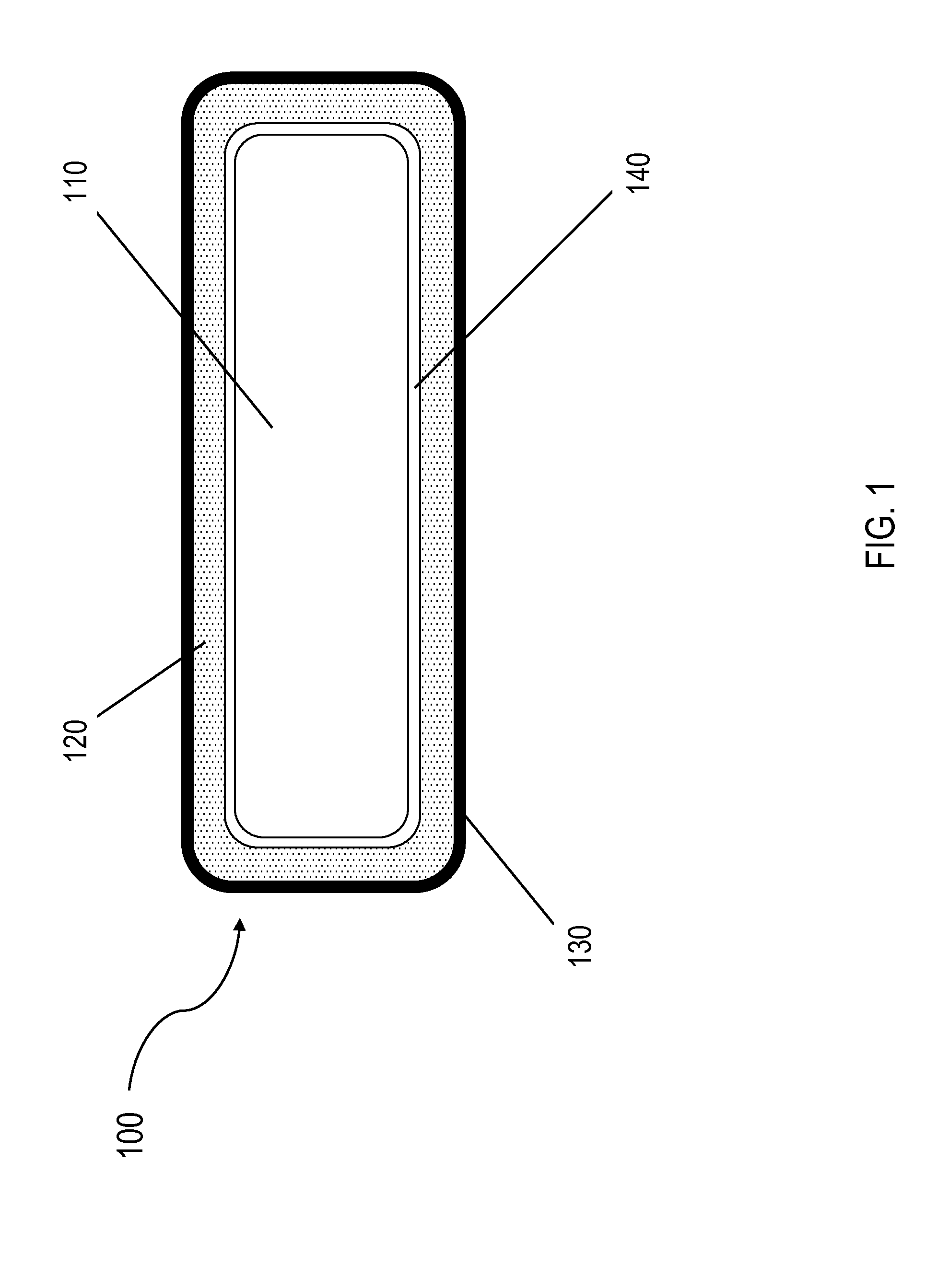Thermally-armored radio-frequency identification device and method of producing same
a radio-frequency identification and thermal armored technology, applied in the field of radio-frequency identification (rfid) technology, can solve the problems of restricting the use of the rfid tag, largely undetected, and subject to removal or tampering
- Summary
- Abstract
- Description
- Claims
- Application Information
AI Technical Summary
Benefits of technology
Problems solved by technology
Method used
Image
Examples
Embodiment Construction
[0026]In one embodiment, a method comprises inserting an RFID tag, which may be either passive, battery-assisted passive, or active, within the material of an item or product, thereby concealing it permanently within such item or product and greatly increasing the ability to conceal it from detection or efforts at tampering with or deactivating it.
[0027]In one embodiment, the thermally-armored RFID tag is designed to withstand enormous heat conditions and certain high-heat conditions found in the molding of plastics, the fabrication of metal products, and any other product fabrication processes involving temperatures that would normally make RFID tag insertion impossible without destruction of the device due to ambient heat. Such insertion of currently-available RFID tags during the high-heat stages of certain product fabrication is not impossible using the method and materials of the invention. In one embodiment, the thermally-armored RFID tag is an improvement over some of the abo...
PUM
| Property | Measurement | Unit |
|---|---|---|
| Temperature | aaaaa | aaaaa |
| Temperature | aaaaa | aaaaa |
| Temperature | aaaaa | aaaaa |
Abstract
Description
Claims
Application Information
 Login to View More
Login to View More - R&D
- Intellectual Property
- Life Sciences
- Materials
- Tech Scout
- Unparalleled Data Quality
- Higher Quality Content
- 60% Fewer Hallucinations
Browse by: Latest US Patents, China's latest patents, Technical Efficacy Thesaurus, Application Domain, Technology Topic, Popular Technical Reports.
© 2025 PatSnap. All rights reserved.Legal|Privacy policy|Modern Slavery Act Transparency Statement|Sitemap|About US| Contact US: help@patsnap.com


